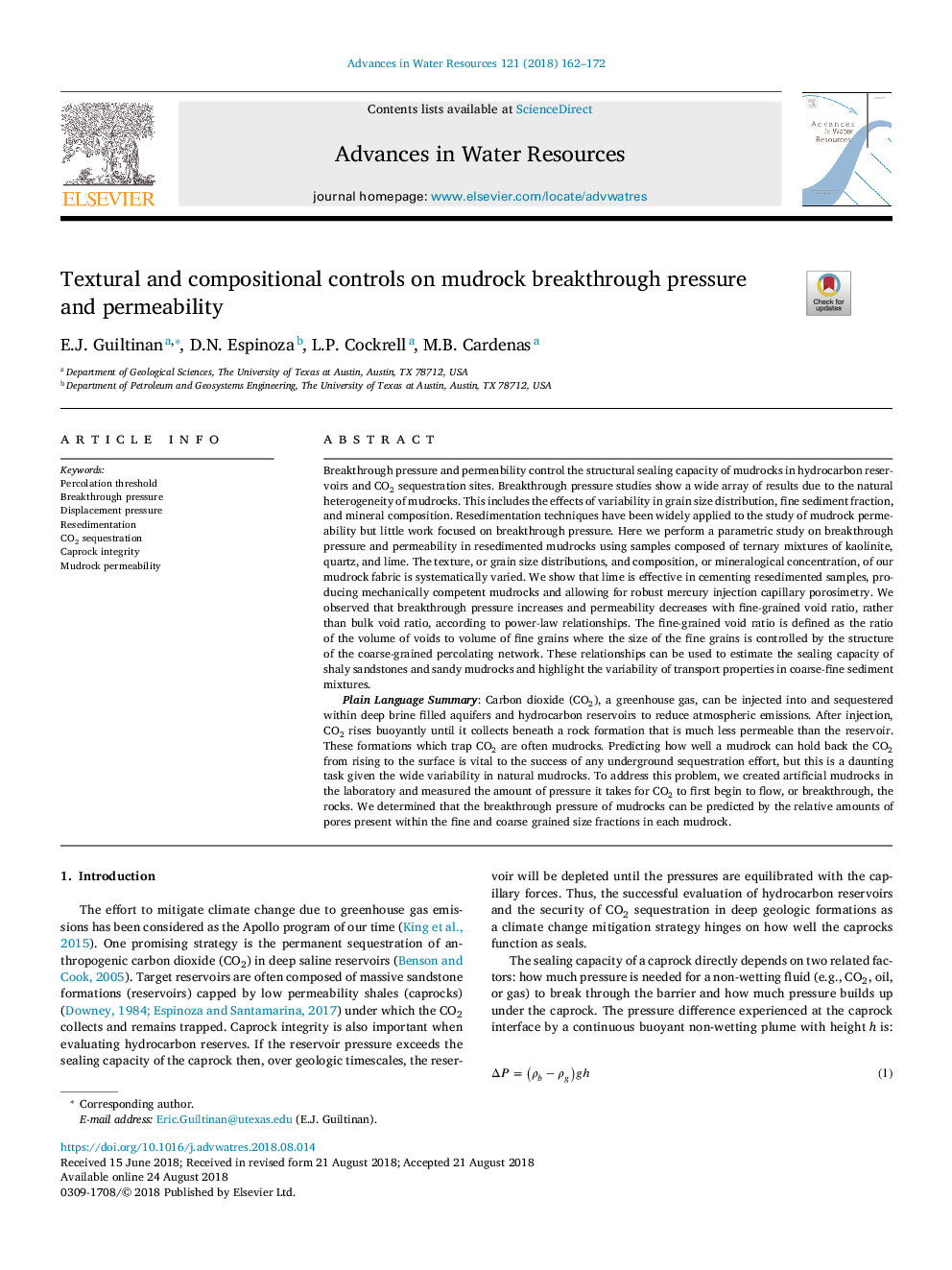| Article ID | Journal | Published Year | Pages | File Type |
|---|---|---|---|---|
| 10117723 | Advances in Water Resources | 2018 | 11 Pages |
Abstract
Plain Language Summary: Carbon dioxide (CO2), a greenhouse gas, can be injected into and sequestered within deep brine filled aquifers and hydrocarbon reservoirs to reduce atmospheric emissions. After injection, CO2 rises buoyantly until it collects beneath a rock formation that is much less permeable than the reservoir. These formations which trap CO2 are often mudrocks. Predicting how well a mudrock can hold back the CO2 from rising to the surface is vital to the success of any underground sequestration effort, but this is a daunting task given the wide variability in natural mudrocks. To address this problem, we created artificial mudrocks in the laboratory and measured the amount of pressure it takes for CO2 to first begin to flow, or breakthrough, the rocks. We determined that the breakthrough pressure of mudrocks can be predicted by the relative amounts of pores present within the fine and coarse grained size fractions in each mudrock.
Keywords
Related Topics
Physical Sciences and Engineering
Earth and Planetary Sciences
Earth-Surface Processes
Authors
E.J. Guiltinan, D.N. Espinoza, L.P. Cockrell, M.B. Cardenas,
